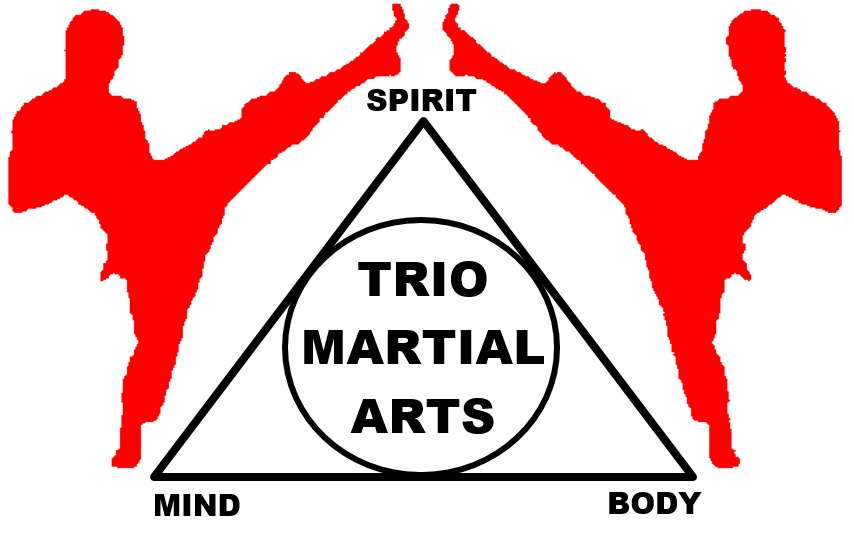|
Author: Bret Gordon 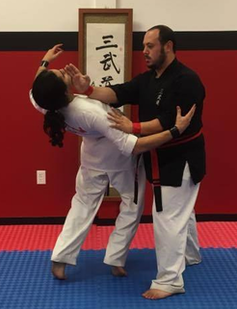 To start with, I promise this will not be some hokey article about a mystical force that no one can feel, see or otherwise experience. I'm not even going to talk about spirituality. The chi I'm talking about (and will be further referring to in Japanese as ki) is a very measurable force that exists within all things in nature. So what is it, and how is it applied in true internal martial arts? Ki 気 literally means "energy," which is commonly defined as the ability to do work. In a martial arts context, we're referring specifically to the generation of force. Energy is created in the human body by a flow of electricity. At rest, the average human body produces around 100 watts of power. Electricity is required for the nervous system to send signals throughout the body and to the brain, making it possible for us to move, think and feel. Almost all of the cells in our body can use charged elements (such as sodium, potassium, calcium and magnesium), called ions, to generate electricity, and therefore energy. All martial arts, and in fact all human movement, use this energy to generate power in their techniques. The amount of power you can generate is dependent on your overall use and understanding of biomechanics and proper structure. But this isn't an article on the most efficient way to punch or kick. Let's get deeper in our study of the arts, and specifically look at the taboo internal arts. Most people's definition of internal martial arts comes from a rudimentary understanding of Taijiquan and Qigong. To them, the "internal" classification refers to the healing properties of these practices, and that's certainly part of it. The flow of energy through the body helps improve the circulatory and respiratory systems, which in turn promote overall health. But can you use ki combatively? Yes! There are two distinct applications of ki in the internal martial arts: disruption and connection. 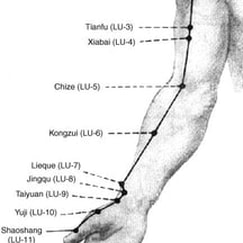 Ki disruption is achieved through the use of pressure points. Depending who you talk to, there are between 108 and 365 pressure points in the human body. These are the same points used in acupuncture and acupressure. Our body is full of nerves that send signals to the brain, and is how we interpret the world around us. These nerves run along meridians. Electrical currents send the information from the nerves along the meridian to the brain, which interprets the information and sends a response back. Anatomically speaking, a pressure point is located where two or more meridians cross. Unfortunately, the human brain can only interpret one signal at a time. When a pressure point is affected, signals from every affected meridian flood and overload the brain, causing it to revert back to a subconscious, instinctual response. Depending how the point is affected, this response can either be an exhalation of breath, a buckling of the knees, temporary loss of control and function of the affected limb, or even a loss of consciousness. This is often accompanied by a pain sensation, but not always. For those who are skeptical about pressure point knockouts, let me point out that it's not as mystical as people make it appear (and most on YouTube are just charlatans). In boxing and MMA, knockouts are often achieved by a well-placed strike to the side of the jaw. Sitting on the lower jaw is a point called Stomach 6 (stomach meridian, point #6). Hit at the correct angle with enough force, and you cause unconsciousness. The same is true of the carotid plexus (a network of intersecting sympathetic nerves which run parallel to the carotid artery into the head). The second, more complicated, use of ki is in connection. The human body conducts electricity, so when two people make contact, the electricity is flowing freely between them. With extensive training, one can use this electrical current to interpret vital information about their opponent. Through the slightest touch, you become sensitive to their structure and immediately can feel where their weight is sitting, where their points of balance are and in what direction is their energy traveling. Then, through the manipulation of the skeletal structure or soft, connective tissue, one can alter the physical shape of the opponent's body and place them in a compromising position, from which they can be thrown or locked. Essentially, it is a use of the body's anatomical structure against itself by using the information gained through the sensitivity of touch. Something that all martial artists are familiar with is the concept of kiai. However, kiai is not a "battle scream" as most like to tout. A proper kiai is generated through the use of the diaphragm to forcefully expel the air from your lungs, which just happens to run over your vocal chords and create a sound. But there are silent kiai as well! The purpose of kiai, when looking at combative application, is two-fold. The contraction of the abdominal muscles in kiai allows you to absorb and disperse impact. The exhalation helps in the release of energy built up in the body, which is felt through the concentrated point of contact, amplifying the force of the technique. The flip side of kiai is aiki (often referred to as "internal power"). These are not two separate concepts, but rather two halves of a whole. Aiki is a set of principles and biomechanical processes that allow you to use the body in its most efficient state. When the practitioner first learns about aiki, it is often through wrist-grab connection drills that teach them both how to become sensitive to the kinetic energy of the attacker and the weak points in their structure. These drills also allow you to isolate and focus on various muscle groups and movements which allow for significant power without extensive movement. This is the true meaning of the adage, "maximum effect with minimum effort." The use of breath, as in kiai, is also crucial to the generation of internal power. 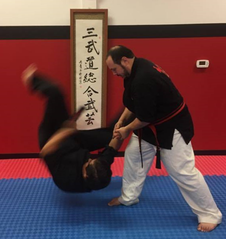 However, that is not the full expression of aiki. Once the sensitivity and principles of motion become ingrained in the practitioner, they are applied with and infused into practical joint locks and throws (jujutsu). This is what is known as aiki jujutsu. This understanding of connectivity, energy and structure amplify the effectiveness of the given technique by affecting the opponent's entire body, rather than focusing on the particular joint being manipulated or point of contact to create the throw. In truth, aiki is formless. It is jujutsu that brings form to the aiki. So, is ki something mystical? No. As Westerners, we simply have a mystical view of anything coming out of the Orient. This, coupled with the metaphoric teachings of most instructors, had led to a gross misunderstanding and condemnation of a very real, measurable principle of the human body. Energy is something that flows in all of us, and the study of ki is merely the study of that energy. Unfortunately, the martial arts have become a very superficial, extracurricular physical activity, and therefore deep study of the human anatomy and physiology is often overlooked. However, it is in these studies that we begin to reach true depth in the martial arts. The study of martial arts is the study of oneself, both spiritually and physically. There is an intellectual component to the arts. Not everything involves hitting a bag. We must seek the highest levels and the farthest depths of our understanding, and pass that on before it's lost. There are far too many practitioners of the arts, and not enough students. 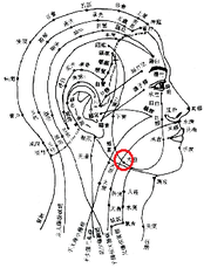 Location of Stomach #6 circled Location of Stomach #6 circled EDIT (May 8, 2018) - I should point out that there are pressure points that do not sit at the intersection of nerve meridians. However, they are usually located in cross proximity to another point. From a martial arts perspective, these are striking points. Because of that, it's almost impossible to strike these points without making contact to a secondary point, which induces the same electrical and chemical response as when the meridians cross. When you isolate them and apply pressure, while you do usually get "something" in response, it's not nearly as drastic as other points and often not felt at all. That's why I said between 108 and 365. They're technically there, but not of significant combative use. Rather, these points assist in the healing properties of the meridian origins through acupressure and acupuncture. When affected, these points increase the flow of energy to the meridian origin. This article was originally published on the US Association of Martial Arts blog. To view the original article, please click here.
0 Comments
Your comment will be posted after it is approved.
Leave a Reply. |



